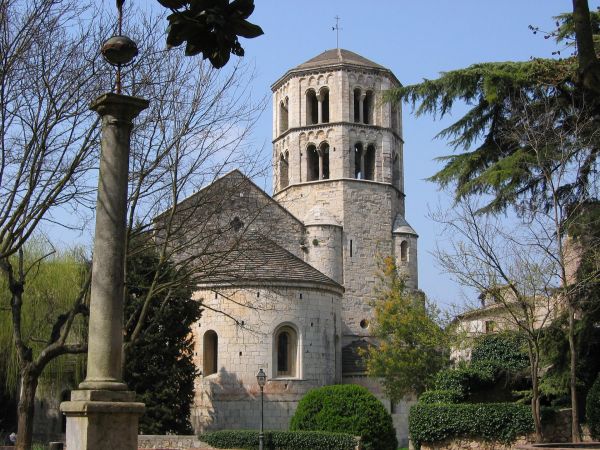Although to a lesser extent than other areas of Catalonia, in Girona you will also find
buildings that tell us about the
cooperative past.
In
Vilajuïga we can visit the building of the grape pomace brandy distillery of the
Agricultural Federation of Trade Unions of Empordà; a building designed by
Cèsar Martinell in 1920 that was only part built: the tower of the "coil", the tanks and the warehouse.
Following the route to
Espolla, we can visit the
winery of the old Agricultural Union of the town; it was designed by the architect
Pelai Martínez i Paricio and was built in 1931. Its wine press room is constructed with parabolic diaphragm arches and the large wood vats can still be seen installed on concrete platforms.
URBAN INDUSTRYIn Girona city there are two distilleries you can visit:
Regàs and
Gerunda.
The first was owned by
Nicolau Regàs, founded in the middle of the 19th century and which produced anise, vermouth and digestive liqueurs under the brand name
Universo, as well as rum, ratafia and brandy with a great international reputation.
The
Modernista building was built between the years 1907-1908 and is the work of the architect Enric Catà i Catà. Despite being an industrial building, its forms are perfectly integrated with the urban setting.
For its part, the
Gerunda distillery, also designed by
Enric Catà i Catà, includes the factory and the owner's house. Today the distillery retains and exhibits the
original wood barrels of the factory.
Moving away from wines and spirits, Girona also has another
industrial Modernista building.
The Teixidor Flour Mill, designed by
Rafael Masó and constructed in 1910.
GIRONA CULTURE AND HISTORYHowever, in addition to Modernisme, you must not miss the city's emblematic buildings from other eras, such as the
Arab baths, the
Cathedral, the
Romanesque monastery of Sant Pere de Galligants or a walk around the
city's Jewish quarter "El Call". And lastly, we must mention the magnificent views of the
houses on the River Onyar and the calm of the
Parc de la Devesa.
Have we managed to inspire you? If you have any other interesting suggestions please send them to us on Facebook or publish your photos on Instagram with the hashtag #patrimonicultural. 


